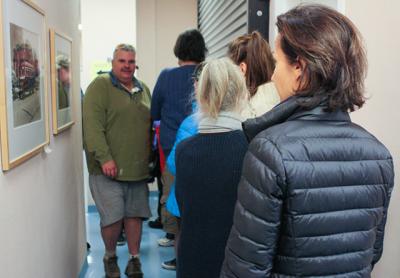Big ‘Yes’ in C.P.F., Water Vote

East End voters on Tuesday overwhelmingly approved a referendum to extend the Peconic Bay Region Community Preservation Fund through 2050 and to allow up to 20 percent of its future proceeds to be used for water quality initiatives.
Delivering a resounding yes for the measure, over 78 percent of East Hampton voters (6,842 to 1,909) and over 80 percent of Southampton voters (16,349 to 4,050) supported it.
“Once again East Hampton voters have proven their overwhelming support for open space preservation and environmental protection,” East Hampton Town Supervisor Larry Cantwell said yesterday morning. “We’re ready to continue to preserve open space as aggressively as we have to this point, and to get to work on the details of our water quality improvement and protection program.”
The measure also passed decisively in Riverhead and Southold Towns, with nearly 75 and 80 percent of the vote, respectively. On Shelter Island, just under 70 percent of voters wanted to extend he program and add the water-quality component.
“The public recognizes the issues we’re facing with water quality,” said State Assemblyman Fred W. Thiele Jr. “The size of the victory is compelling,” he said, and will “arm the supporters of water-quality remediation” to appeal to the county and state for additional resources. He said a new state environmental bond act, with a large water-quality component, should be discussed.
The preservation fund, financed by a 2-percent tax on most real estate transfers, was first passed in 1999. Voters approved a 10-year extension, through 2030, in 2006.
Since its inception, the fund has raised over $1 billion for open space and historical preservation in the five East End towns. Supporters of the referendum, looking at a 10-year average of past revenue, expect that it could provide East Hampton Town with some $4.6 million annually for water projects such as wastewater treatment, aquatic habitat restoration, stormwater diversion, and other pollution prevention efforts.
“I think the water is as important to our community as the land is,” Jeanne Frankl, chairwoman of the East Hampton Town Democratic Committee, said at a Democratic Party gathering Tuesday night at LTV. “The high water table makes our drinking water fragile . . . 20 percent is not too much to invest in water.”
Each town has drafted its own plan listing possible projects that could be undertaken with the money. In East Hampton, Councilman Peter Van Scoyoc has said, the first step will likely be testing ground and surface waters to establish baseline water-quality levels before improvement efforts are undertaken.
With Reporting by
Christine Sampson
